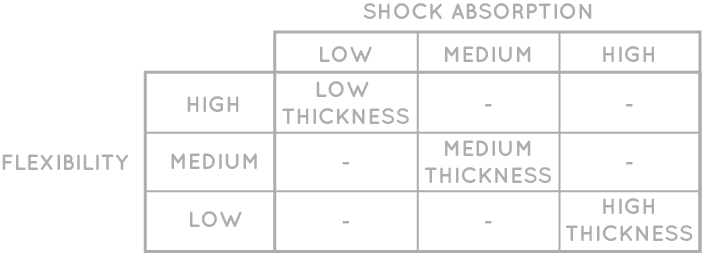Klas & Sylph has three levels of thickness – low, medium, high. The level of our midsole thickness has a direct relationship with the midsole flexibility. While all levels of thickness are flexible, the lower thickness, the higher the flexibility, and vice versa. Nevertheless, higher thickness, though less flexible, comes with greater shock absorption. The table below summarizes the level of flexibility and shock absorption with respect to different levels of thickness.

How thick the sole would be best for you depends on your daily lifestyle and/or the road conditions you’re normally taking. If your daily lifestyle involves high-impact activity and/or you’re normally taking a rocky road, then our higher thickness range should be better for you. If your daily activity requires you to do a lot of squat (e.g. gardening), then our lower thickness range should be better. We recommend our medium thickness range if your lifestyle/road conditions is somewhere in between the above scenarios.
Please note that, in addition to midsole thickness, it is important to take midsole density into consideration to accurately determine whether or not the midsole has adequate shock absorption ability. In fact, midsoles with lower thickness but higher density may be more shock absorbing than midsoles with higher thickness but lower density. Klas & Sylph has put a lot of research effort into the development of Burlin Sole. Through thickness-density optimization, we have created more slender midsoles (i.e. less bulky) but with the level of shock absorption comparable or even exceeding that of many existing products with thicker midsoles in the market.

